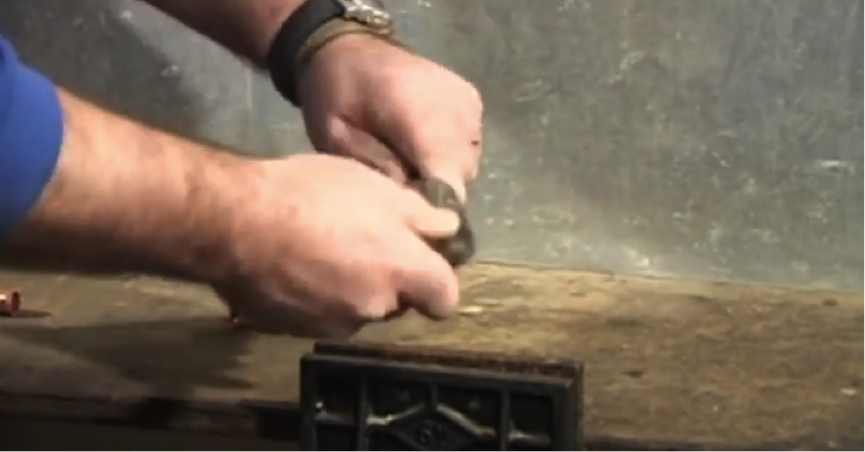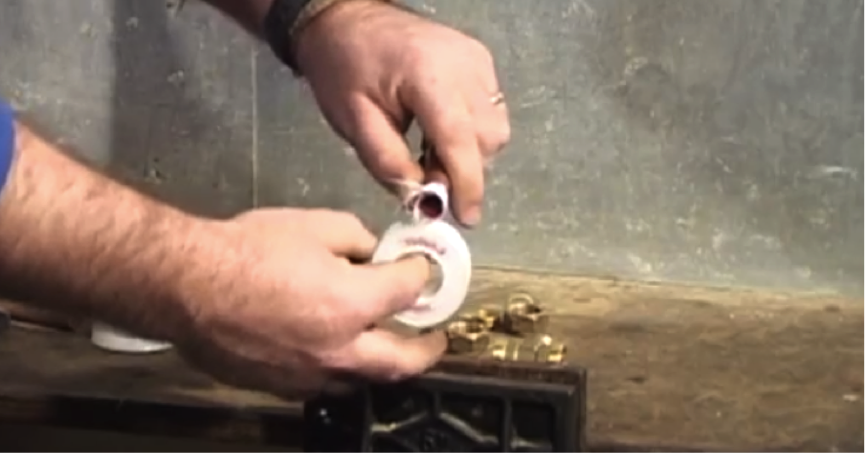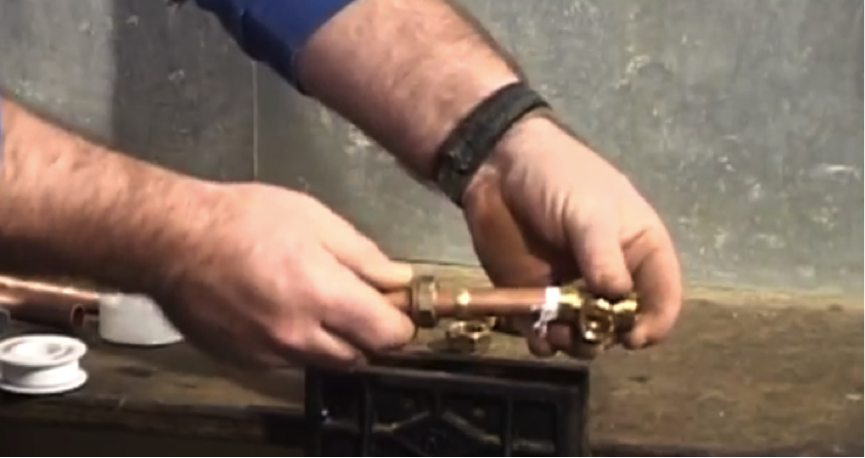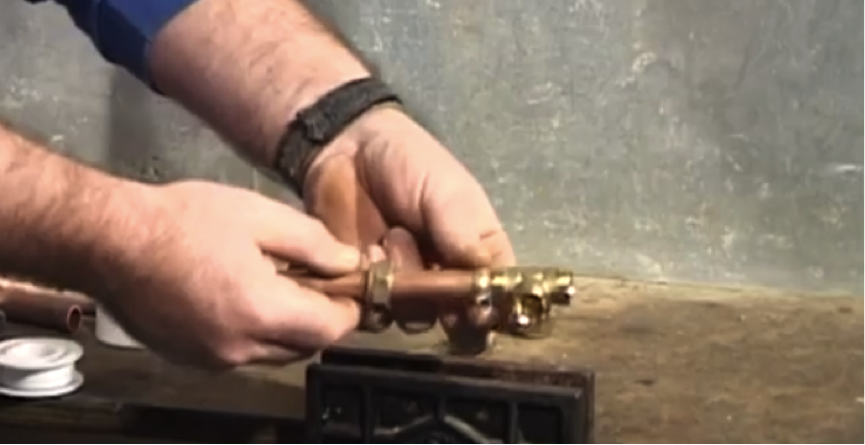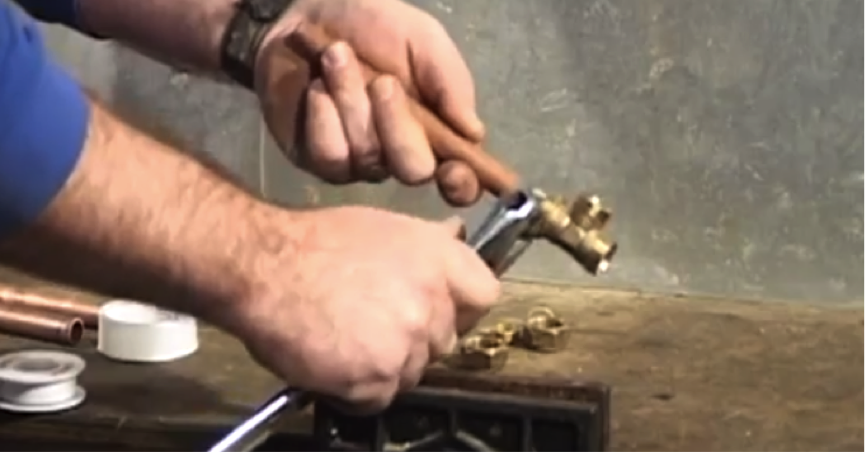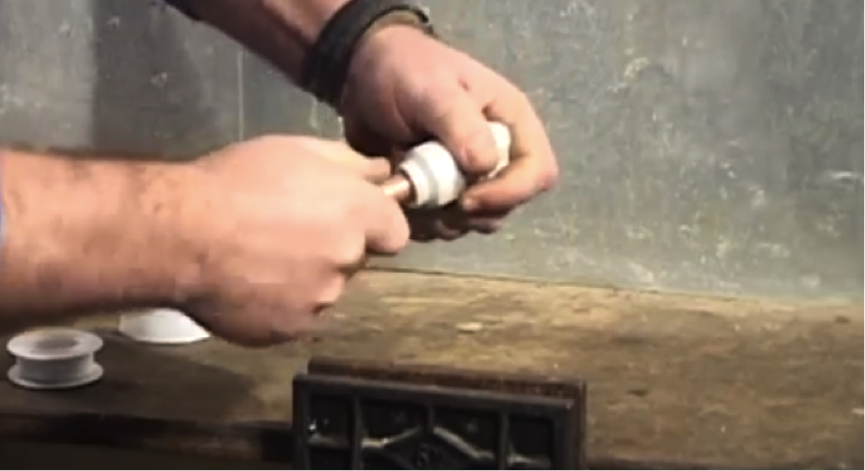Here’s our straightforward guide to some of the most simple and easy to use pipe join types. This includes compression joins and push fit joins, both of which are great for beginners but can be a little pricey and expensive as a result.
Step 1. Prepping the pipe
As with any kind of pipe join, before you start, clean the pipe with a special copper pipe cleaner or simply use wire wool. This will remove a lot of the grime and dirt from the pipe and ensure a better join. Although, for compression joins this is less important than for solder joins.
Step 2. Taping the end of the pipe
Take your PTFE tape and wrap it around the end of the pipe that’s forming the join. A couple of complete turns of the tape should be enough to help form a tighter seal.
Step 3. Push into the join
Once applied, push the taped end into the join as far as it will go and make sure it is secure. This should form a tight seal around the pipe.
Step 4. Bring up olive and nut
Bring up the olive and secure over the end of the pipe join. Then do the same with the nut. Hand tighten as much as possible.
Step 5. Tighten with a spanner
Use your adjustable spanner to get a good grip on the join nut. Tighten as much as possible to ensure a good leak-proof join.
- Be careful not to overtighten. This can begin to damage the olive, and you will see it start to appear under the nut. This means it is being crushed and not compressed. If this happens you must break the joint, add some more PTFE tape and start again.
- If you crush the pipe, then you must replace it.
Step 6. Push fit connectors
Another simple type of pipe connector is the push fit. It is very simple to use. You simply loosen the connector, push the pipe in and hand tighten. It’s a really simple solution but more expensive and not suitable for small spaces or behind walls because of its size.
